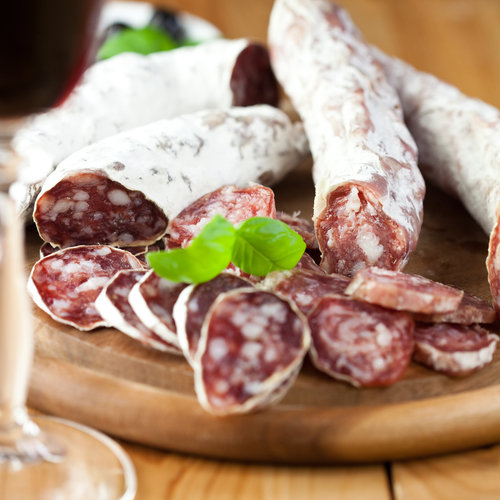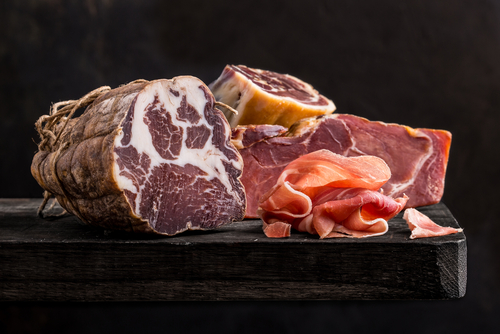When it comes to meat processing methods, some are made with fresh meat. No further treatment is then added to the final product. Other meat processing techniques involve curing, cooking, smoking, or a combination of any of those.
The type of processing method (or methods) used will significantly affect the quality, flavor, and texture of the final product. In today’s post, let’s look at the curing method of processing meat.
Curing Meat
There are two types of curing for meat: pickle curing and dry curing. Pickle curing uses salt, nitrite, ascorbic acid, sugar, and sometimes phosphate. These ingredients are mixed with water to make a pickle solution.
Pickle Curing
The pickle solution is then poured into the meat in the following ways:
- Artery pumping
- Stitch pumping
- Vat curing
- Massaging or tumbling
Artery Pumping – this pickling procedure is only used for curing hams. Sometimes it’s also used to cure shoulder or arm parts. From the name itself, the pickle solution goes into the artery through an injection.
The solution then travels from the cut all over the vascular system. In fast-moving and bigger meat processing plants, this procedure requires a complete 24 hours.
Stitch Pumping – this pickling procedure uses one needle stuck into several openings of the meat or several needles with just one opening to inject the pickle solution.
Many commercial processed meat products have been cured using the multiple needle technique. This is because you get a more even distribution of the pickle solution throughout the body.
You hasten the curing method if you use stitch pumping. This is because the curing part is happening from the interior to the exterior of the meat.
After the stitch pumping, the bacon part or pork bellies are smoked. However, more substantial parts, such as ham, are rested for several hours before they go into the smokehouse.
Vat Curing – this pickle curing method uses a big vat with the pickle solution. Then the meat is completely submerged in it. You then wait until the pickle solution completely dissolves into the meat.

Smaller meat processing companies mostly use this method.
The length of the cure will depend on the size and the cut of the meat. Typically, it takes nine or ten days per inch of thickness of the meat cuts.
This method also requires more space. It does necessitate more yield of meat products more than any other pickle curing ways.
Massaging or Tumbling – this pickle curing method uses a machine that is similar to a concrete mixer. The mixer massages or tumbles the meat parts as they are being cured. The tumbling or massaging aspect accelerates the curing process.
It also helps in the extraction of an agent that acts as the glue to hold the meat cuts together. This agent is called the myofibrillar protein myosin. It may take several hours to tumble the meats. After the tumbling process, the hams will then be smoked.
Dry Curing
With a dry cure as a processing method, you don’t have to introduce water, not the meat cuts. Instead, you use dry curing ingredients. One of these ingredients is nitrate, which is then rubbed all over the meat’s exterior surface.

Given sufficient time, the dry curing ingredients penetrate the meat muscles through the osmosis process.
Any excess liquids or water are then eliminated. Dry curing also extends the life of the meat product – even without the use of refrigeration.
Many consider the final dry-cured meat products tend to lean on the saltier side. The final product is also drier and firmer.
Compared to pickle cured meat products, dry-cured meats sell for a more premium price.
This is because the process can take longer. You need seven days of curing per inch of meat thickness. The yield of the product is also lower. In addition, the products are not as commonly available as other processed meat products.
